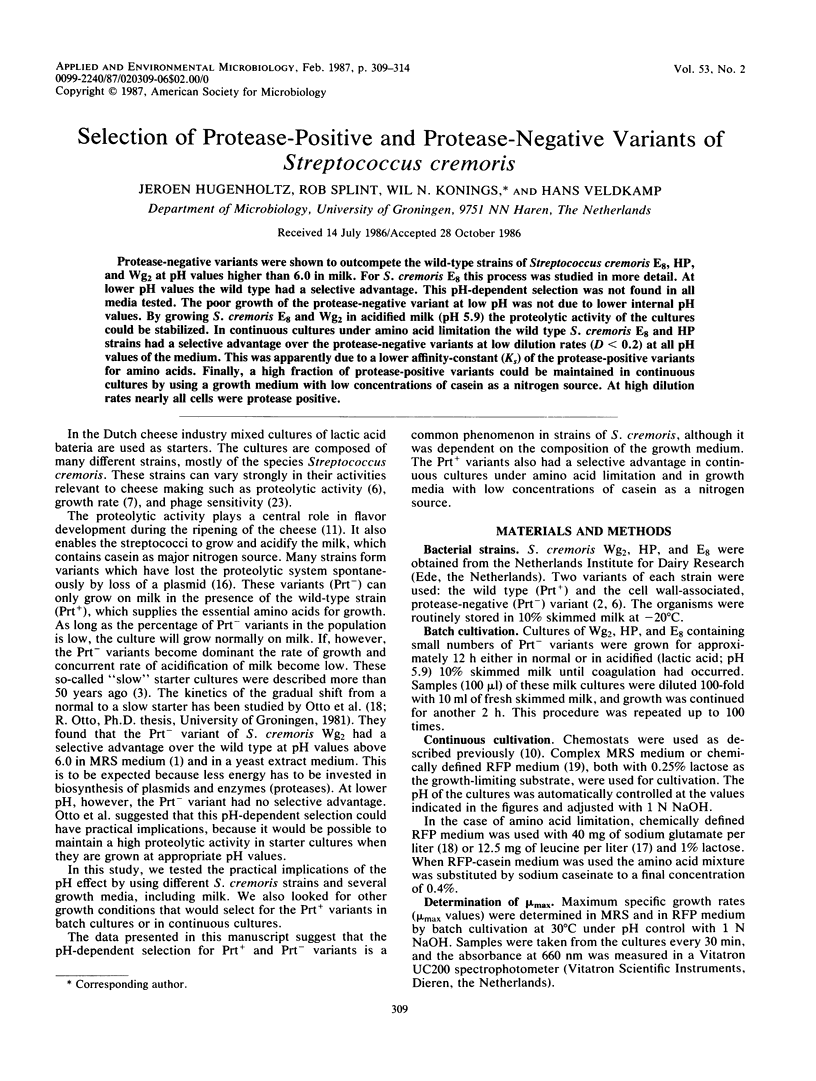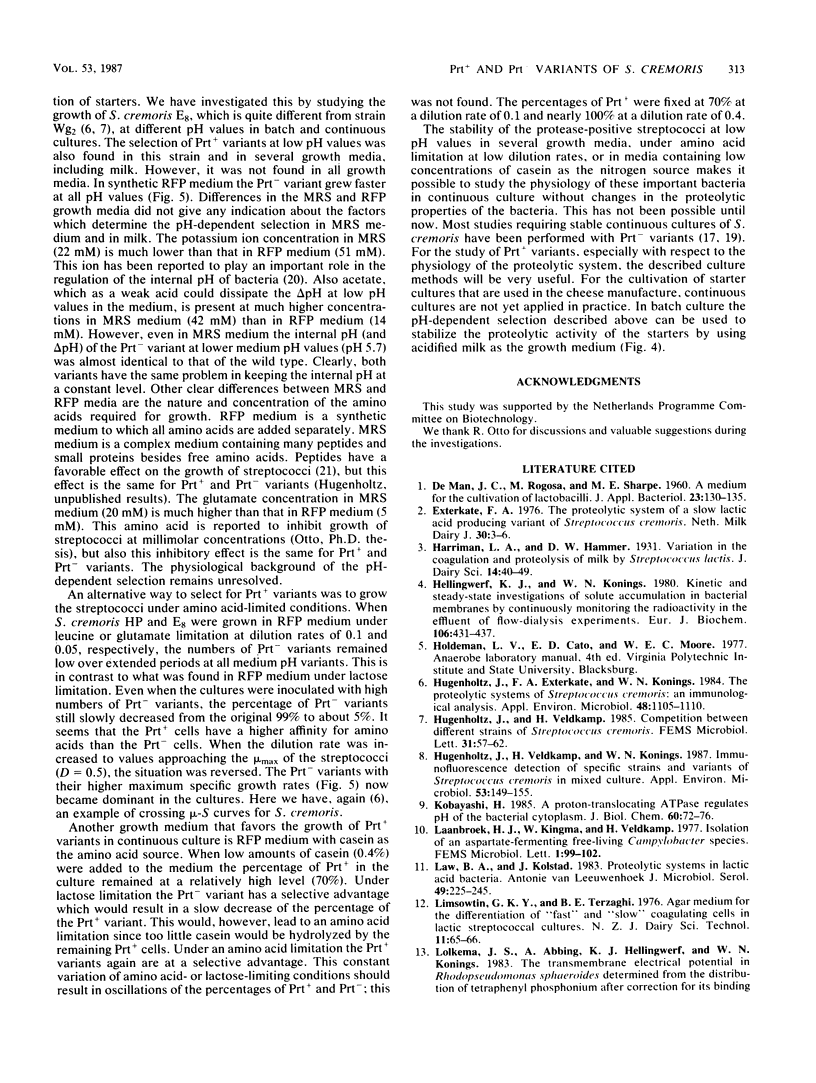Abstract
Protease-negative variants were shown to outcompete the wild-type strains of Streptococcus cremoris E8, HP, and Wg2 at pH values higher than 6.0 in milk. For S. cremoris E8 this process was studied in more detail. At lower pH values the wild type had a selective advantage. This pH-dependent selection was not found in all media tested. The poor growth of the protease-negative variant at low pH was not due to lower internal pH values. By growing S. cremoris E8 and Wg2 in acidified milk (pH 5.9) the proteolytic activity of the cultures could be stabilized. In continuous cultures under amino acid limitation the wild type S. cremoris E8 and HP strains had a selective advantage over the protease-negative variants at low dilution rates (D < 0.2) at all pH values of the medium. This was apparently due to a lower affinity-constant (Ks) of the protease-positive variants for amino acids. Finally, a high fraction of protease-positive variants could be maintained in continuous cultures by using a growth medium with low concentrations of casein as a nitrogen source. At high dilution rates nearly all cells were protease positive.
Full text
PDF





Selected References
These references are in PubMed. This may not be the complete list of references from this article.
- Hellingwerf K. J., Konings W. N. Kinetic and steady-state investigations of solute accumulation in bacterial membranes by continuously monitoring the radioactivity in the effluent of flow-dialysis experiments. Eur J Biochem. 1980 May;106(2):431–437. doi: 10.1111/j.1432-1033.1980.tb04589.x. [DOI] [PubMed] [Google Scholar]
- Hugenholtz J., Exterkate F., Konings W. N. The Proteolytic Systems of Streptococcus cremoris: an Immunological Analysis. Appl Environ Microbiol. 1984 Dec;48(6):1105–1110. doi: 10.1128/aem.48.6.1105-1110.1984. [DOI] [PMC free article] [PubMed] [Google Scholar]
- Hugenholtz J., Veldkamp H., Konings W. N. Detection of Specific Strains and Variants of Streptococcus cremoris in Mixed Cultures by Immunofluorescence. Appl Environ Microbiol. 1987 Jan;53(1):149–155. doi: 10.1128/aem.53.1.149-155.1987. [DOI] [PMC free article] [PubMed] [Google Scholar]
- Kobayashi H. A proton-translocating ATPase regulates pH of the bacterial cytoplasm. J Biol Chem. 1985 Jan 10;260(1):72–76. [PubMed] [Google Scholar]
- LOWRY O. H., ROSEBROUGH N. J., FARR A. L., RANDALL R. J. Protein measurement with the Folin phenol reagent. J Biol Chem. 1951 Nov;193(1):265–275. [PubMed] [Google Scholar]
- Law B. A., Kolstad J. Proteolytic systems in lactic acid bacteria. Antonie Van Leeuwenhoek. 1983 Sep;49(3):225–245. doi: 10.1007/BF00399500. [DOI] [PubMed] [Google Scholar]
- McKay L. L. Functional properties of plasmids in lactic streptococci. Antonie Van Leeuwenhoek. 1983 Sep;49(3):259–274. doi: 10.1007/BF00399502. [DOI] [PubMed] [Google Scholar]
- Otto R., de Vos W. M., Gavrieli J. Plasmid DNA in Streptococcus cremoris Wg2: Influence of pH on Selection in Chemostats of a Variant Lacking a Protease Plasmid. Appl Environ Microbiol. 1982 Jun;43(6):1272–1277. doi: 10.1128/aem.43.6.1272-1277.1982. [DOI] [PMC free article] [PubMed] [Google Scholar]
- Teuber M., Lembke J. The bacteriophages of lactic acid bacteria with emphasis on genetic aspects of group N lactic streptococci. Antonie Van Leeuwenhoek. 1983 Sep;49(3):283–295. doi: 10.1007/BF00399504. [DOI] [PubMed] [Google Scholar]
- ten Brink B., Konings W. N. Electrochemical proton gradient and lactate concentration gradient in Streptococcus cremoris cells grown in batch culture. J Bacteriol. 1982 Nov;152(2):682–686. doi: 10.1128/jb.152.2.682-686.1982. [DOI] [PMC free article] [PubMed] [Google Scholar]


